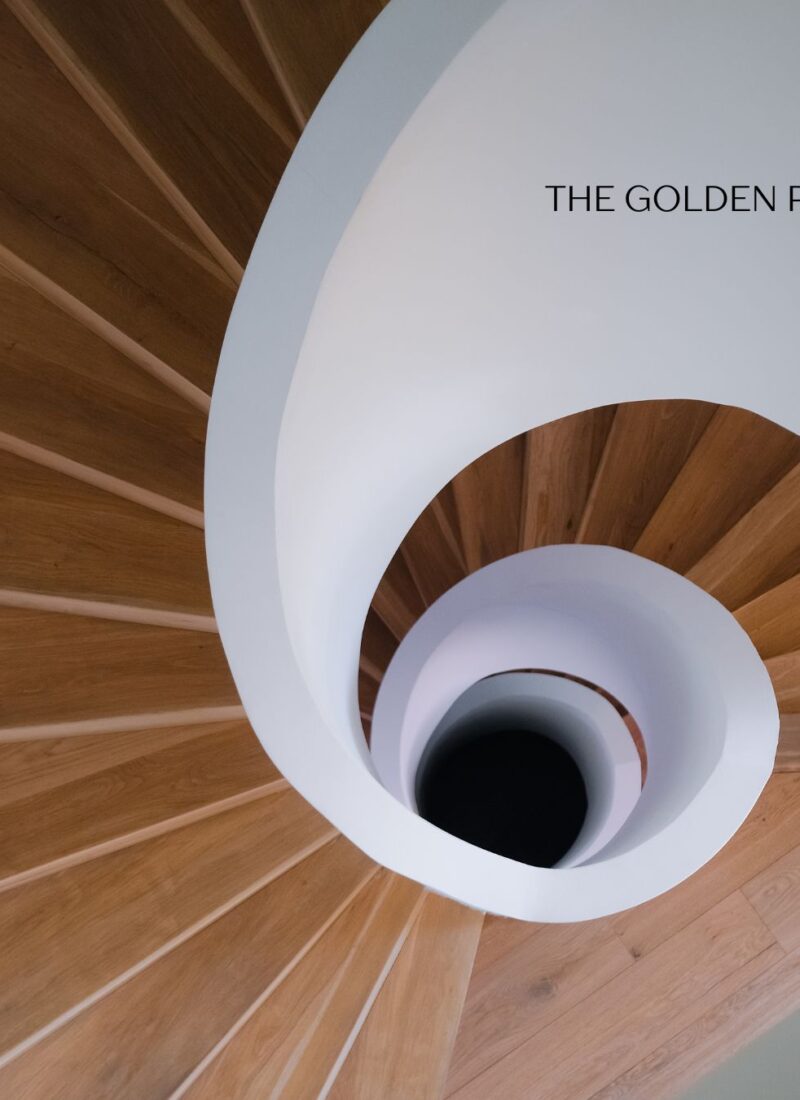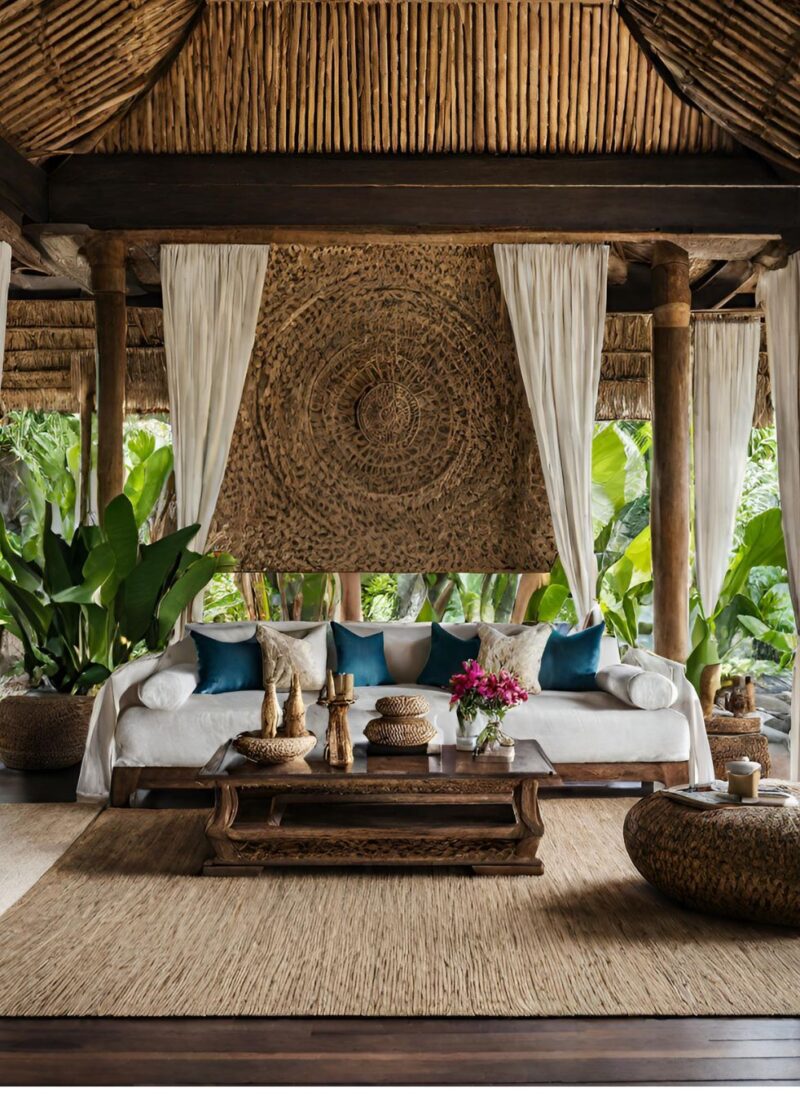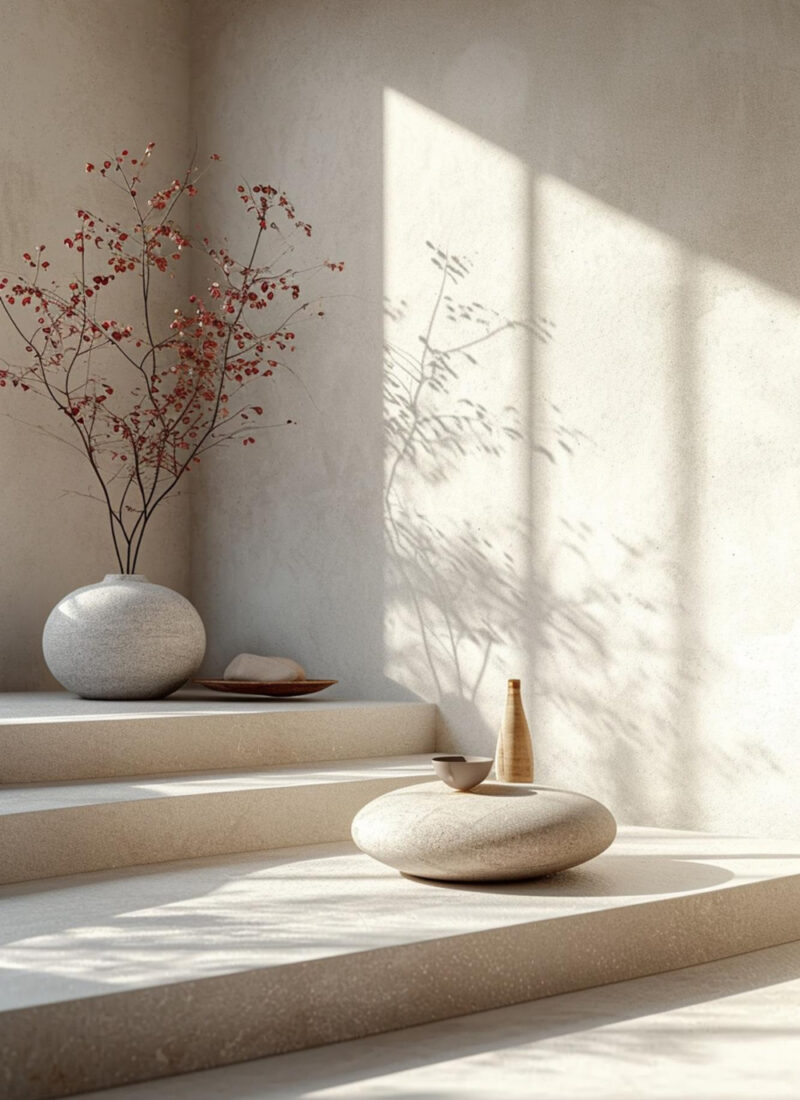Sinuous lines, flowing curves, and whimsical elements define the Art Nouveau interior design. Considered as one of the more feminine schools of design, Art Nouveau gets much of its inspiration from nature. Unlike its very close sister, the Art Deco style, it exaggerates what is in nature.
Discover the enchanting world of Art Nouveau interior design, where the elegance of natural forms meets the sophistication of artistic craftsmanship. This unique design style, which flourished at the turn of the 20th century, continues to captivate with its sinuous lines, organic shapes, and intricate motifs. If you’re drawn to interior designs that blend artistic beauty with natural elements, diving into the Art Nouveau style could offer endless inspiration for your home.
This article introduces what Art Nouveau style is, what are the elements that comprise such design, and tips on how you can incorporate Art Nouveau decor and furniture in your living spaces.
What Defines Art Nouveau Interior Design?
Art Nouveau, with its roots in the natural world and a penchant for flowing, organic forms, offers a distinctive approach to decorating and design. This section will unveil the key characteristics that set Art Nouveau apart, from its curvaceous lines to its nature-inspired motifs.
The Brief History of Art Nouveau
Art Nouveau started in architecture and later on adapted to interior design. Since no design is 100% pure, Art Nouveau is influenced by Japonism which can be seen in the former’s prints on porcelain and minute furnishing details. The advances in lithography pushed the worldwide spread of Art Nouveau design. Popular artists that used Art Nouveau in their works include Gustav Klimt, Vincent van Gogh, and Paul Gauguin.
Art Noveau became influential in the 60s and 70s. Similar to when it began, the revival was based on the drive to break free from the confinement of the austere Minimalism movement. It became the psychedelic replacement of straight lines and sterile color palettes.
The modern twist on Art Nouveau is the more frequent use of nature materials and organic shapes. This also mirrors what people want nowadays- to be more connected to nature while at home.

The Role of Nature in Art Nouveau Design
Nature isn’t just an inspiration in Art Nouveau; it’s the heart and soul of the movement. Learn how designers like Hector Guimard and Louis Majorelle turned to the natural world to craft spaces that feel both organic and enchanting.
Art Nouveau Design Elements
Just like any design movement that left a mark in the human psyche, Art Nouveau is a design-forward movement that has been reinvented several times. Here are the elements that define the Art Nouveau decor.
Soft Lines
Art Nouveau is known not only for curvy and straight lines but also those that highlight vertical height. It is also known for the whiplash line. This design is also known as the Wave Style, which showcases the wave element.
You might think that the use of curvy lines is practically ornamental in the Art Nouveau patterns. The fact is, this design movement wants to copy how vines, wings, and stalks move in nature. Art Nouveau is a celebration of everything organic, and in a way, surprising. It is disruptive in a good way. In a sense, it baffles the eyes.
Asymmetric
You can’t find repetitive and predictable movements in an Art Nouveau interior design. On the contrary, this design movement prides itself in its variability. Drawing inspiration from nature, the Art Nouveau style rejected very linear lines and opted for flowing patterns that mimic the organic world. This created a delicate look that’s very feminine.

Stylised Floral Designs
While many design movements use nature as their inspiration, the Art Nouveau movement puts this a notch higher by using whimsical designs to portray plants and flowers, not just the bloom but down to the twigs and buds.
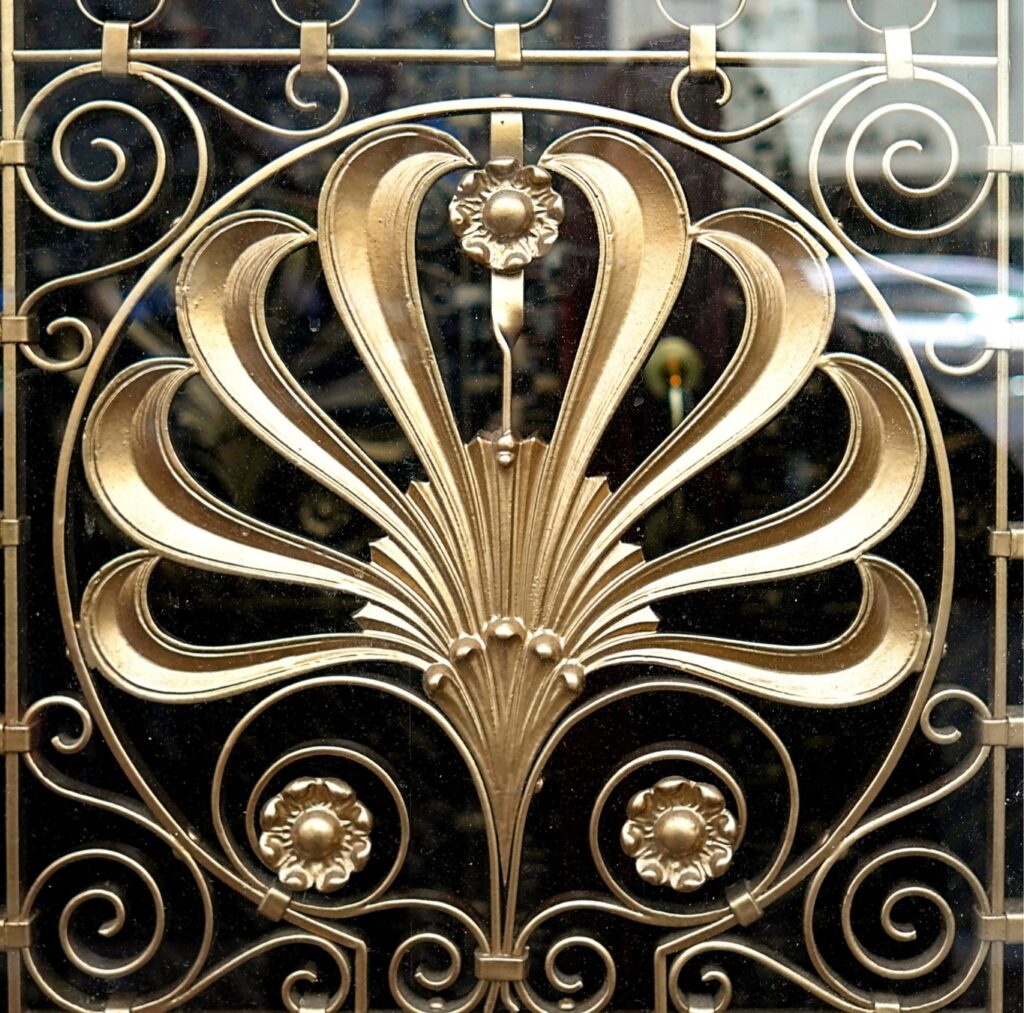
The Female Form
We owe this to the Pre-Rapahelite inspiration. You can see women with curvy forms and flowing hair.
Stained Glass
Another signature feature of the Art Nouveau movement is the use of stained glass. Through the staining technique, you can celebrate colors as light passes through them. This makes the room truly whimsical. Apply this feature to cabinets, windows, and doors. Instead of large pieces of glass art, you can include mosaic stained glass.
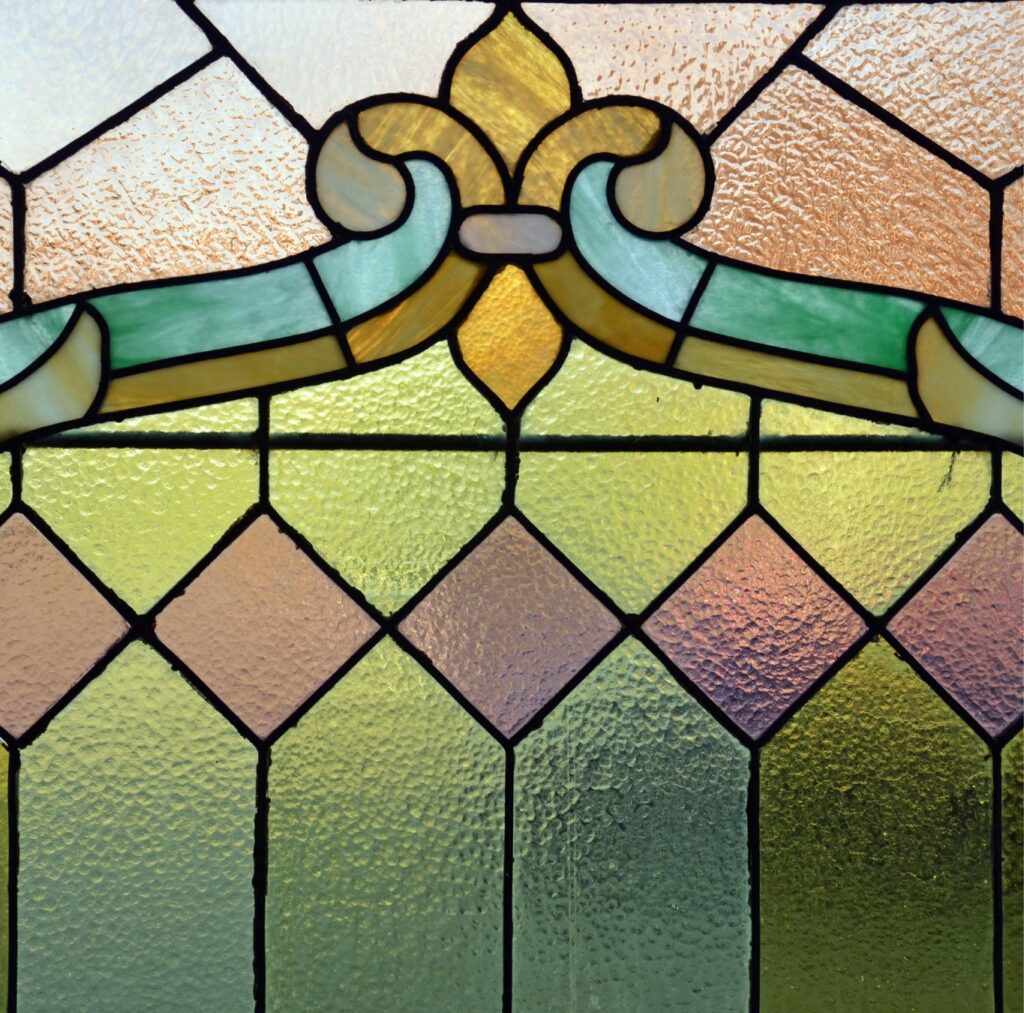
Art Nouveau Furniture and Decor
Discover how to spot genuine Art Nouveau pieces by their hallmark features. This segment guides you through the world of ornate lamps, stained glass, and furniture that embodies the movement’s ethos, ensuring you can identify authentic Art Nouveau design elements.
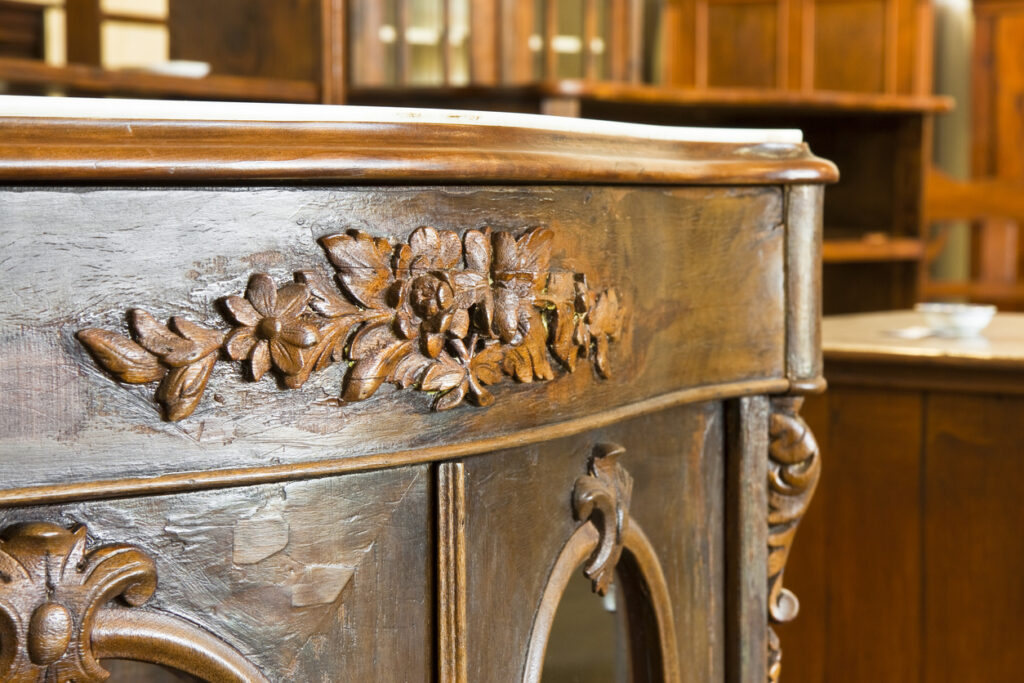
Incorporating Art Nouveau Elements into Modern Spaces
Merging Art Nouveau elements with contemporary design can be both a challenge and a delight. Explore ways to seamlessly integrate the elegance and sophistication of Art Nouveau into today’s interiors, creating spaces that are both timeless and on-trend.
Furniture Takes Center-Stage
Carved wood in irregular shapes and forms are the en vogue for this design movement. Choose curvy designs that follow the natural grains of the wood. Art Nouveau furniture is often decorated with woodland scenes, which are often added to armoires, chests, and consoles.
Natural Colors
Palettes in natural shades are the norm in Art Nouveau design. You can choose from these selections:
-
- Chestnut
-
- Terracotta
-
- Ocher
-
- Walnut
-
- Soft grays
-
- Vanilla
-
- Beige
-
- Cream
-
- Toffee
Your accents can be any of these colors:
-
- Wine
-
- Purple
-
- Olive
-
- Lilac
Natural Shapes
An Art Noveau room may look too much for some people but a closer inspection, you see that each piece is placed strategically and doesn’t cross other pieces. Hence, there is no overloading of Art Nouveau home decor and furniture. Wood features often have stylized looks. Its look is based on nature, after all.

Exotic Motifs
Floral forms are the norm in Art Nouveau designs and motifs but you can also find vines, curvy branches, peacock feathers, butterfly wings, and dragonflies. Art Nouveau homes are often viewed as works of nature as opposed to man-made. You want to be close to how nature behaves and that should transcend to the designs.

Open Arches
Open door arches are used in lieu of door frames except for the areas that need privacy such as the bathroom. Ceilings are often high and multi-leveled, often assymetrical. Avoid sharp corners.
How to Design with Art Nouveau Elements
You can spruce up your interiors with modern art nouveau interior design elements. Art Nouveau is more dreamy and fantastical than its sister, the Art Deco interior design. Here are some tips to help you during the design process.
Color
Unlike other interior design movements that only allow you to use several sets of palettes, Art Nouveau has a wider variety of hues and shades to choose from. One thing you must remember, though- you need to stick to natural shades. Mix them with greens and yellows similar to a tree with leaves, a brook with stones or a meadow full of wildflowers.
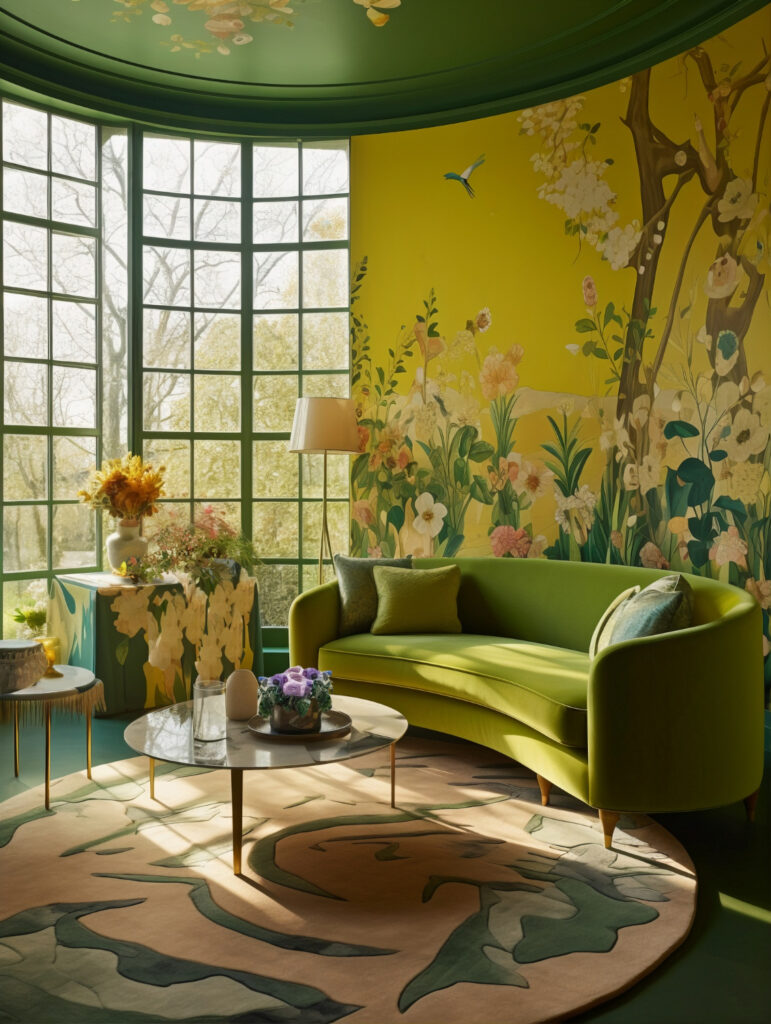
Flooring
Your pale wood floors can have a decorative appeal by staining the wood, putting varnish, or using parquets. You’d find each Art Nouveau room has a different flooring but the living rooms and bedrooms are made with wooden or carpeted floorings. On the other hand, the kitchen and bathroom use patterned tiles or stones in natural hues.
Wallpaper
Choose wallpaper with floral designs with decorative plaster. This best defines Art Nouveau. If you want to downplay the use of Art Nouveau on the furniture, you can use floral motifs on your wallpaper but make sure that such designs are still cohesive with the look of the entire room.
Photo by Jean-Philippe Delberghe on Unsplash
Furniture
Use larger pieces of ornately-decorated furniture but be sure that these are not bulky that occupy so much space. Such design can also be used for door frames, headboards, stair railings, and cabinet doors.
Art Nouveau furniture is made of solid wood material with bronze inserts and the base of the legs is made of bent metal rods. Again, there should be no sharp corners. Chairs have bent legs and carved softbacks
Railings often have florid decorations. Headboards often have curved shapes, chairs are high-back and tables are low. Add a colored glass top to those tables to finish the look. Wardrobes and sideboards are heavy-looking with their intricate designs inspired by nature.
You Need To learn About What Is Classic Interior Design?
Lighting
Multi-tiered chandeliers are standard Art Nouveau pieces. Look for an intricately-designed one with numerous candle-like elements. The chandeliers should be made of wrought iron. Add a large sconce above the headboard in the bedroom. These lighting fixtures are best paired with stained glass of wooden wall decor.
Use frosted glass for window implements so when the sunlight hits them, it creates a dreamy and mystical effect on the floor. In addition, you can’t talk about Art Nouveau decor without using Tiffany lamps. These lamps originally dated in the 1800s when Louis Comfort Tiffany introduced them with the latest glass-making techniques at that time. The Tiffany lamp comes in different designs such as peony petals and wisteria leaves.
Avoid using Art Nouveau flower patterns with halogen lamps and LEDs. You want to make the room tranquil. This means more natural light during daytime and matte lighting at night. Use floor lamps with decorative bodies inspired by nature. One such example is a floor lamp arranged to look like a stalk of a flower. You can also choose scones with curvier lines and motives.

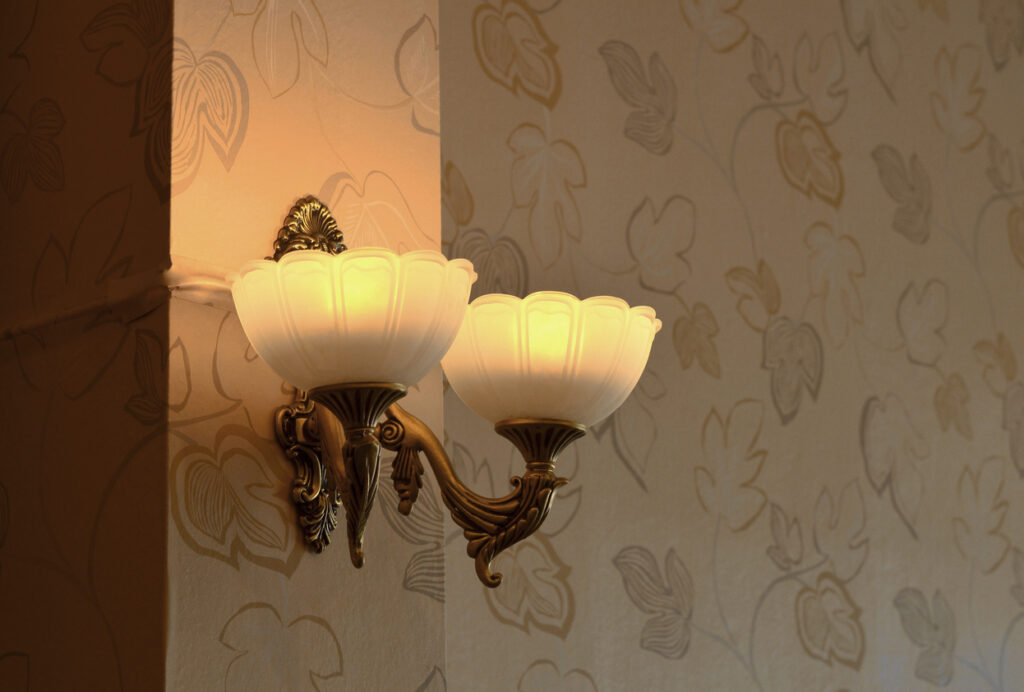
Learn More About: What Is Biophilic Interior Design
Choosing the Right Art Nouveau Motifs for Your Space
Not all Art Nouveau motifs fit every space. This section helps you select the right patterns, from floral to geometric, ensuring they complement your home’s existing aesthetic and atmosphere.
Decor
Use massive wall decors, sculptures, and vases. These should depict everyday living, panoramas, still lifes, fruits, and vegetables. You can also add art prints with simple Art Nouveau patterns such as dragonfly wings, and flowers.
Decorate your bathroom with nautical features. You can add shell motifs. Your living room can have exotic motifs like peacock feathers and parrot designs. You can choose a bedside table with high but curvy legs. Add a lamp with a matte shade.
Fabric
Heavier textiles are used in the Art Nouveau design movement such as brocade, velvet, and velour. Use these fabrics for curtains, pillows, or upholstery. But if you use them for the latter, make sure these are printed with Art Nouveau floral design.
The Art of Using Art Nouveau Wallpaper and Tiles
Wallpaper and tiles offer a straightforward yet impactful way to introduce Art Nouveau into your interiors. Discover how to choose designs that reflect the movement’s essence and enhance your home’s overall look.

The Difference Between Art Nouveau and Art Deco
While both styles share a name, Art Nouveau and Art Deco are distinct in their inspiration and expression. This section clarifies the differences, helping you distinguish between the organic, flowing lines of Art Nouveau and the geometric, streamlined forms of Art Deco.
Conclusion: Embracing Art Nouveau in the 21st Century
- Art Nouveau’s love for nature and organic forms offers a timeless source of inspiration.
- Integrating Art Nouveau elements into modern homes adds sophistication and elegance.
- The difference between Art Nouveau and Art Deco is significant, with each style offering unique appeal.
- DIY projects and well-chosen pieces can bring the beauty of Art Nouveau into contemporary interiors.
- The movement’s enduring influence demonstrates its compatibility with modern design sensibilities.
Embracing Art Nouveau today means more than just adding a few curvy pieces or floral patterns to your decor. It’s about adopting a design philosophy that prioritizes natural beauty, craftsmanship, and an organic flow in living spaces. Whether through a meticulously selected lamp, a DIY tile project, or simply by incorporating more nature-inspired motifs into your home, Art Nouveau offers a rich wellspring of design inspiration that endures in the 21st century.
To End
The Art Nouveau era may have been short-lived but this design movement has made a mark in interior designing with its playful use of colors and lines as well as the fantastical impression of nature. Do you think you can use Art Nouveau when designing your home? How can you apply the principles of this art movement? Share to us your thoughts.
The Art Nouveau design started in Great Britain in the late 1900s with William Harris. But Art Nouveau took inspiration from Pre-Raphaelite artists like Dante Gabriel Rosetti. The idea behind the Art Nouveau movement espouses the break from asymmetrical and unnatural artistic composition and balance of the Victorian era.
